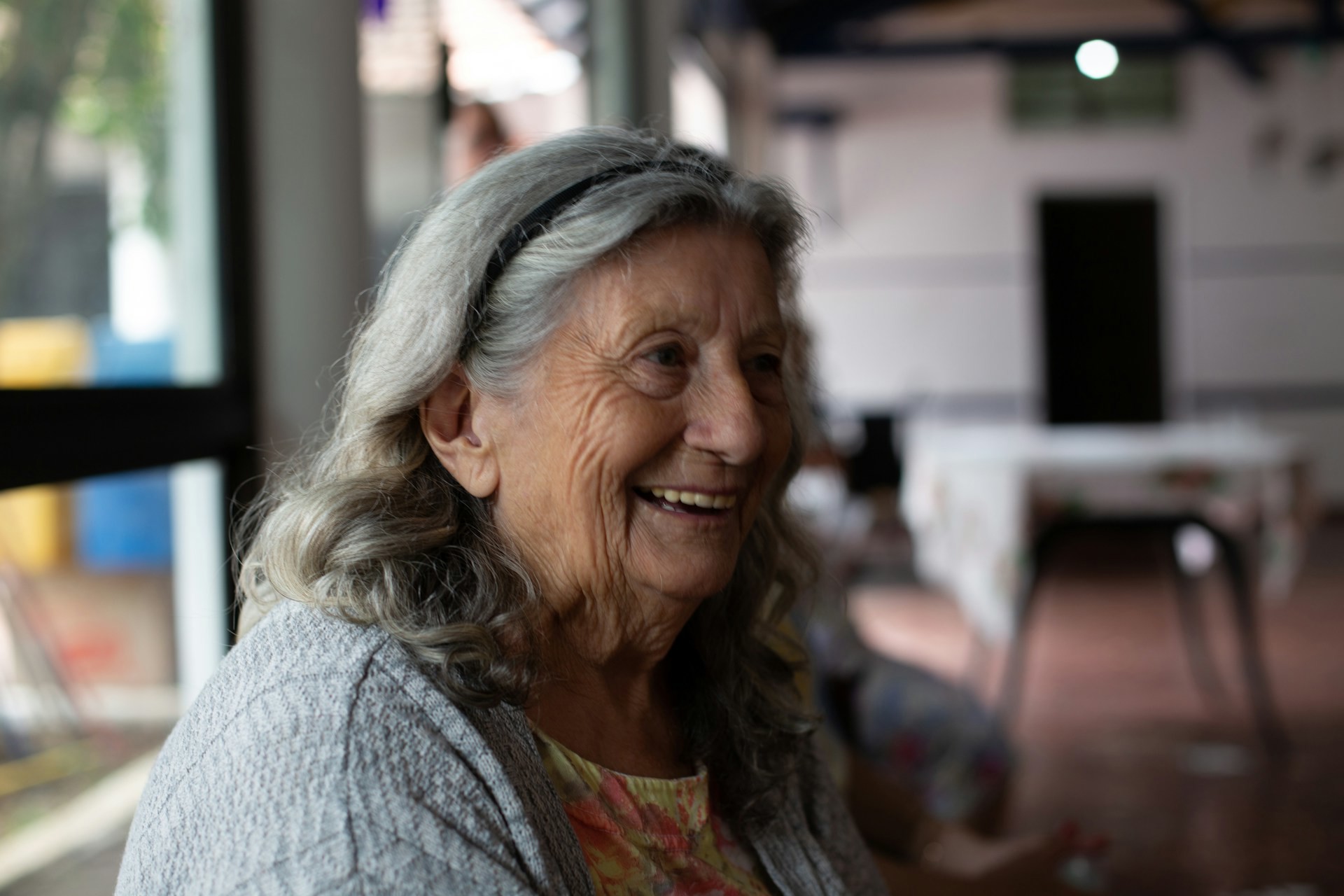Ultraviolet light has been used for decades to prevent tuberculosis by disinfecting the air. This study will test whether germicidal ultraviolet light can reduce COVID-19 infection. It will run for 12 months between 2024–25 in residential aged care facilities across Melbourne and Geelong in Victoria, Australia. The UV devices will be installed near the ceilings of common areas. They are called upper room germicidal ultraviolet (UR-GUV) light devices.
This study is called 'Effectiveness of germicidal ultraviolet Light in an Upper room Configuration In Decreasing COVID-19 in Aged-care Residential facilities’ – or ELUCIDAR.

Does UV light reduce COVID-19 transmission?
The main aim of this study is to measure the rate of COVID-19 infection in residential aged care facilities. We want to see if germicidal UV reduces the rate.
We also want to:
- measure infections caused by COVID-19, influenza and RSV (Respiratory Syncytial Virus) among residents and staff
- measure hospitalisations and deaths caused by COVID-19, influenza and RSV
- determine the acceptability and feasibility of UR-GUV operation in residential aged care facilities
- determine the cost-effectiveness of UR-GUV in residential aged care facilities.
Image: Nor Gal/Shutterstock.com
How will we test the effectiveness of UV light?
We plan to recruit up to 60 residential aged care facilities (RACFs) that have 75 operational beds or more. The RACFs will be in metropolitan Melbourne or Greater Geelong, Victoria, Australia.
The facilities will be randomly put into 2 groups:
- RACFs that will have UR-GUV lights installed on the ceilings of common areas. This is the intervention group.
- RACFs that will have no UR-GUV lights installed. This is the control group.
Both groups will continue to follow the current standards for infection prevention in the Victorian Department of Health guidelines.
This is called a cluster-randomised controlled trial. The ‘clusters’ are the residential aged care facilities. This allows us to collect and compare the outcome data between the 2 groups of RACFs and assess the real-world effectiveness of UR-GUV.

Benefits to the community
Residential aged care facilities are at higher risk of airborne pathogen outbreaks and their consequences. Common airborne pathogens include COVID-19, influenza and RSV.
UR-GUV could reduce the transmission of airborne pathogens by inactivating them when they come into contact with ultraviolet C (UV-C) light.
UR-GUV's advantages are that:
- it can deliver high levels of clean air so that transmission of airborne infections can be interrupted
- it doesn't rely on interventions requiring behavioural uptake or modification, such as masks, testing or isolation.
This study will give us information about the role of UR-GUV as part of a suite of interventions that can prevent and manage COVID-19 and other respiratory illnesses. It will also enhance our preparedness for future airborne pathogen threats and pandemics.
More information
For more information, please contact cleanindoorair@burnet.edu.au.
This study's ANZCTR Trial Registration number is 387769.
Other resources are available as follows:
- Read the news story 'Ground-breaking clinical trial to test the effectiveness of Germicidal Ultraviolet Light to fight airborne viruses'.
- Read about the ELUCIDAR study on the Victorian Department of Health website.
- Read about germicidal ultraviolet light on the Victorian Department of Health website.
- Read about upper room germicidal ultraviolet germicidal lights on the Centers for Disease Control and Prevention website.
- Read the research article 'Healthy indoor air is our fundamental need: the time to act is now' published in The Medical Journal of Australia.
Co-Principal Investigators
A/Prof Suman Majumdar, Burnet Institute
Dr Michelle Delaire, Victorian Department of Health
Co-Investigators
Prof Helen Cox, Burnet Institute
Dr Rachel Sachs-Davis, Burnet Institute
Prof Jason Monty, University of Melbourne
A/Prof Andrew Stewardson, Monash University
Dr Simon Joosten, Monash University
A/Prof James McMahon, Monash University
Dr David Lister, Victorian Department of Health
Dr Vinay Menon, Goulburn Valley Public Health Unit, Victorian Department of Health,
Prof Lidia Morawska, Queensland University of Technology, Australia
Prof Guy Marks, Burnet Institute
Collaborators
Prof. Jason Monty (Department of Mechanical Engineering).
A/Prof Andrew Stewardson (Infection Prevention and Healthcare Epidemiology Unit, Department of Infectious Diseases, The Alfred Hospital and School of Translational Medicine)
Dr Simon Joosten (Monash Lung and Sleep - Monash Health and School of Clinical Sciences)
A/Prof James McMahon (Clinical Research Unit, Department of Infectious Diseases, The Alfred Hospital and School of Translational Medicine, Monash University)
Janine Roney (Clinical Research Unit, Department of Infectious Diseases, The Alfred Hospital and School of Translational Medicine, Monash University).
Queensland University of Technology:
Distinguished Professor Lidia Morawska (International Laboratory for Air Quality and Health, Queensland University of Technology).
Funding partners
Victorian Department of Health
Burnet project team
Meet the project team. Together, we are translating research into better health, for all.















